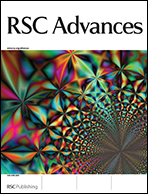A novel method for the preparation of covalently linked capillary coatings of polyethylene glycol (PEG) was demonstrated using photosensitive diazoresin (DR) as the coupling agent. Layer by layer (LBL) self-assembly film of DR and PEG based on hydrogen bonding was first fabricated on the inner wall of capillary, then the hydrogen bonding was converted into covalent bonding after treatment with UV light through a unique photochemistry reaction of DR. The covalently bonded coatings suppressed protein adsorption on the inner surface of the capillary, and thus a baseline separation of lysozyme (Lys), cytochrome c (Cyt-c), bovine serum albumin (BSA) and ribonuclease A (RNase A) was achieved using capillary electrophoresis (CE). Compared with the bare capillary or non-covalently bonded DR/PEG coatings, the covalently linked DR/PEG capillary coatings not only improved the CE separation performance for proteins, but also exhibited good stability and repeatability. Due to the replacement of highly toxic and moisture sensitive silane coupling agents by DR in the covalent coating preparation, this method may provide a green and easy way to make the covalently coated capillaries for CE.

You have access to this article
 Please wait while we load your content...
Something went wrong. Try again?
Please wait while we load your content...
Something went wrong. Try again?


 Please wait while we load your content...
Please wait while we load your content...